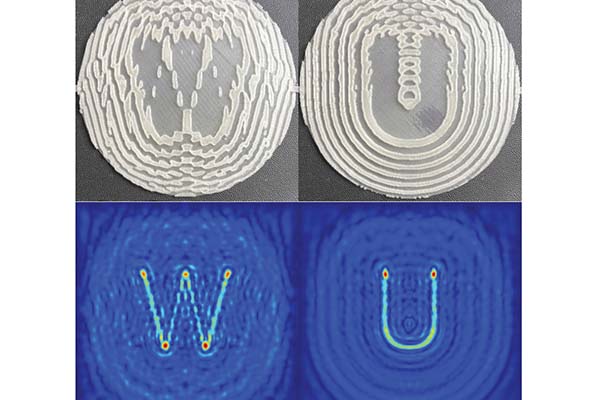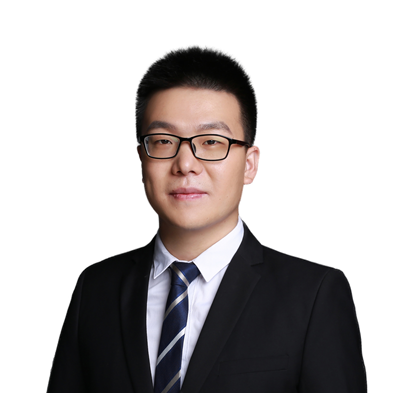New practical method of producing Airy beams could enhance ultrasound
Hong Chen’s lab develops technique to generate Airy beams for ultrasound focusing

Researchers at Washington University in St. Louis recently invented a technique for generating ultrasound waves that can self-bend, like the rainbow.
Airy beams are a class of acoustic waves that move on a curved, arch-like trajectory and can auto-focus around obstacles that are directly in the beam’s path, which makes them well suited for ultrasound applications in biomedical imaging, therapy, non-destructive testing and particle manipulation.
However, generating Airy beams in water requires large, expensive equipment, which has limited their broad applications in ultrasound.
Hong Chen, associate professor of biomedical engineering in the McKelvey School of Engineering and of radiation oncology at the School of Medicine, and members of her Ultrasound Laboratory designed and 3D printed a flexible and versatile tool known as Airy beam-enabled binary acoustic metasurfaces (AB-BAMs) for ultrasound beam manipulation. They then demonstrated the capability of AB-BAM in water. They reported their findings July 22 in Physical Review Applied.
According to Zhongtao Hu, a postdoctoral research associate and first author of the paper, their team is the first to develop the 3D-printed AB-BAMs to successfully generate Airy beams for ultrasound focusing.
“Airy beams are unique because we can tune the size of the focal region,” he said. “These 3D-printed AB-BAMs can be used in broad applications, including ultrasound-mediated tumor ablation or drug delivery.”
Their 3D-printed AB-BAMs enable flexible and versatile ultrasound beam manipulation, including a sharply focused, tunable, steerable beam, which is useful for various ultrasound applications.
For example, high-intensity focused ultrasound (HIFU) therapy requires a short beam that can generate intense heat at a single point to destroy a cancerous tumor without damaging nearby healthy tissue. On the other hand, regular ultrasound imaging that is used to diagnose disease requires a beam with narrow lateral focal dimensions to improve resolution.
In addition to Chen and Hu, other members of the research team include WashU graduate students Yaoheng Yang and Lu Xu, as well as Yun Jing, a faculty member in the acoustics graduate program at Penn State University.
Hu Z, Yang Y, Xu L, Chen H. Airy Beam-enabled Binary Acoustic Metasurfaces for Underwater Ultrasound Beam Manipulation. Physical Review Applied, online July 13, 2022. DOI: https://doi.org/10.1103/PhysRevApplied.18.024070
This research was funded by the National Institutes of Health (grants R01 EB027223, R01EC030102, R01MH116981, and UG3MH126861) and the Office of Naval Research (grant N00014-19-1-2335).





